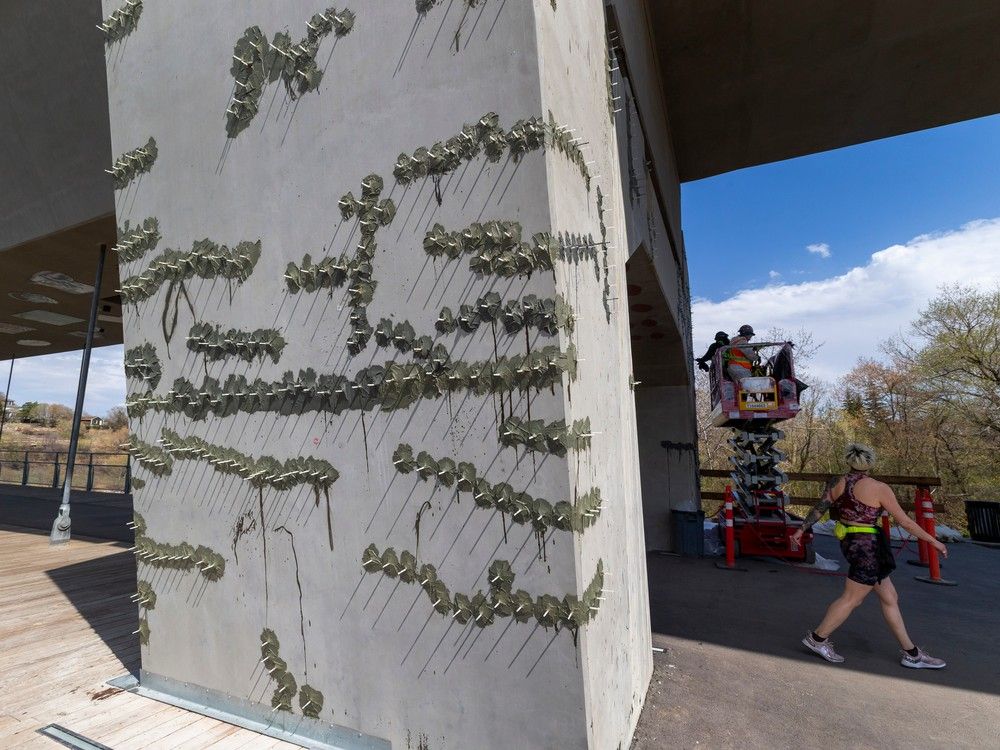Yes and no. Calgary's system does have its good points (it's more extensive, for one thing, although we will catch up if and when the Valley Line legs start to open.
The problem with Calgary is that their current LRT lines are above-ground in the downtown, which was a mistake. (A mistake we're repeating with the Valley Line.) Our downtown stations on the Capital and Metro lines are light years ahead of Calgary's downtown stations, plus ours have pedway access to nearby major buildings.
The other flaw with Calgary is that the lines don't hit all the major destinations the way Edmonton's do and will. There is no C-Train service to Foothills or Rocky View Hospitals, for example, nor to Market Mall, one of the city's largest shopping centres. Meanwhile the Metro Line serves the Royal Alex and the both the Capital and Metro Lines stop at the University hospital. The completed Valley Line (if/when) will bring both the Grey Nuns and the Misericordia onto the LRT network, meaning that all Edmonton's full-service hospitals will be LRT-accessible. And the Capital Line South provides for a station at the southwest hospital (again, if and when it opens). Edmonton also has all three major educational institutions (U of A, NAIT, MacEwan) on the existing LRT network.
The importance of having major shopping centres and hospitals on a rapid transit network cannot be overstated. Even the Lower Mainland (which, like Edmonton, started out with one simple line and has since expanded significantly), has been bringing most major shopping centres and hospitals onto the SkyTrain network (the Arbutus extension to the Millennium Line will add VGH).
Even where Calgary does have stations near major shopping centres, they're way too far. Anderson station, which "serves" Southcentre, is on the wrong side of Macleod Trail. Chinook station is a laughable two whole blocks from Chinook Centre. By contrast Southgate station and the future West Edmonton Mall station are right on the malls' parking lots.
The C-Train was built quick and they were able to capitalize well on having 3 sides of the city well-connected by the train feeding into a robust CBD. But it definitely feels less impressive beyond sheer scale and ridership levels (which are both quite important, don't get me wrong). The routing misses a lot and the stations aren't as interesting. Edmonton's LRT stations have, until the Valley Line, tended towards more differentiation in style and layout because they were built slowly over time, while some got renovated and others did not. South Campus, Bay, Coliseum, Clareview, University are all on 1 line and have more variation and interesting designs than your average C-Train station. The Valley Line will be more like this, where aside from Davies Station, the stations kind of blend together. Which makes sense - they're not focusing on 3 new stations and better able to make each unique, they're rolling out a full new line (rather than the Metro Line spur).
Some of its issues are geographic. The South Line follows an old freight rail ROW not unlike our NE corridor of the Capital route. It just isn't as blessed in terms of connecting people directly with where they want to be. But it'd be substantially more extensive to run a train down MacLeod, which would've been the better choice aside from the cost issue. It's where the major malls, office buildings, and condo towers, along with many other services are. MacLeod is Calgary's Yonge and it should have a line befitting that.
The issue with the inner NW stuff around the UofC is that Calgary did not efficiently design the space. In that area, you have the UofC, Alberta Children's Hospital, Market Mall, Foothills Hospital, McMahon Stadium, and the new University District. They're all neighbours, but are bisected by low-density residential, and take up massive amounts of land in totally different parts of that cluster of development. It's a bit of a mess. Even the parts with C-Train access - McMahon and UofC - only get it on the very periphery. In terms of better land use efficiency and active transport connectivity, they could demolish University Heights (low-density sprawl) and rebuild Foothills there. Then re-route the NW line from North Hill down 16 until University Drive, then west down 24th Ave until McLauren, then down McLauren to Market Mall, have it continue down Shaganappi until Crowchild where it can continue under the current route to Tuscany. This would, however, be expensive, and highlights how hard it is to fix these inefficient urban planning decisions from decades ago that were predicated on cars and de-centralization.
It's why Mill Woods will be a nightmare to retrofit.
Edit: one thing I think Calgary's C-Train does do better in terms of connectivity is to its various urban neighbourhoods. Bridgeland, Kensington, the East Village, and Sunalta, for example. And with the Green Line, Inglewood and Crescent Heights as well will get access. Marda Loop has BRT access too. The only gap (and it's a big one) is the Beltline-Mission and I think that's because of the geography (the area running parallel to Downtown, but also needing its own connections to Downtown despite a nearby Red Line on the periphery in the parking lots and Saddedome). This is a similar issue to Whyte/Strathcona, but at least there's more geography between the two that a like down Jasper and a line down Whyte feels less redundant.
